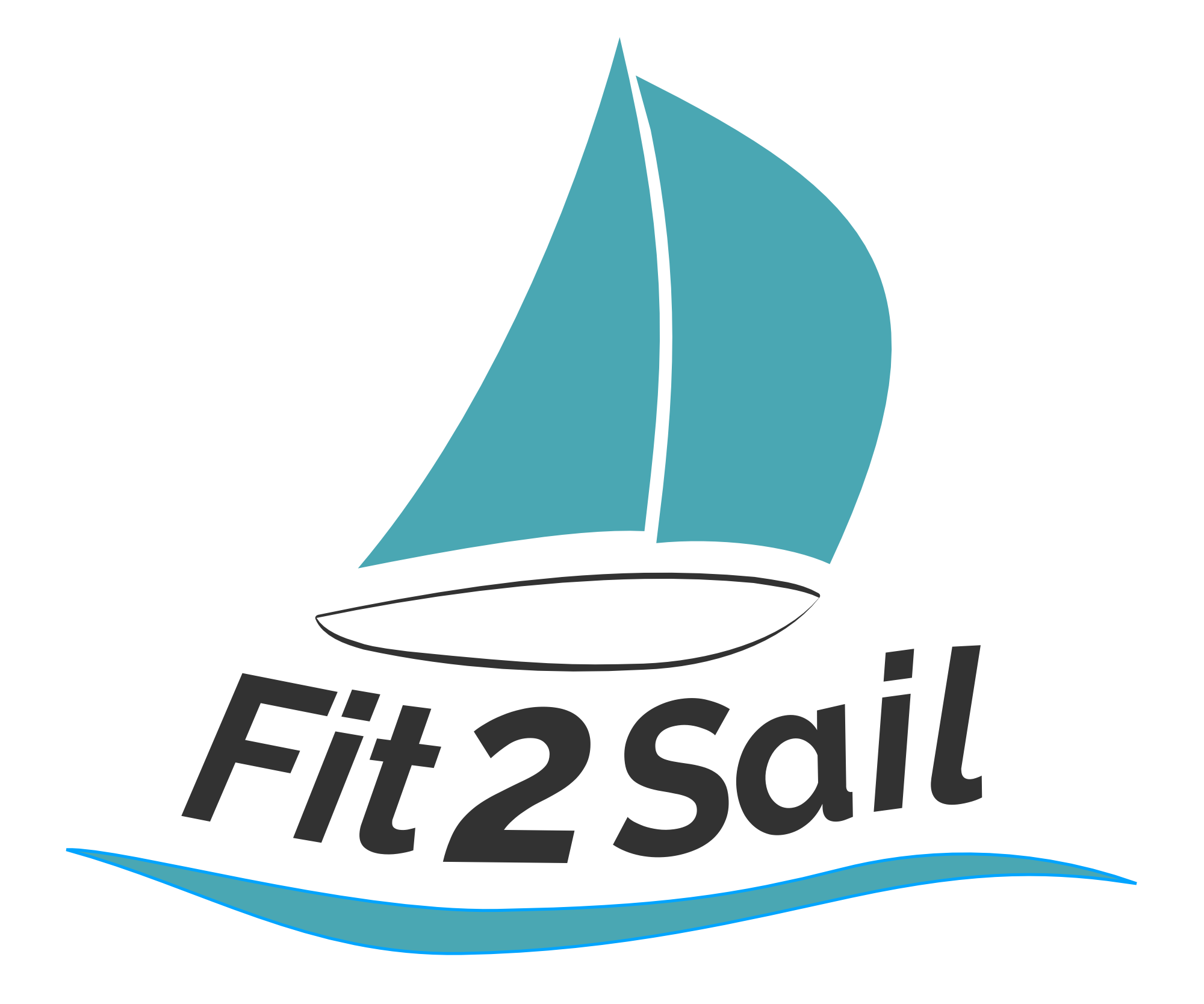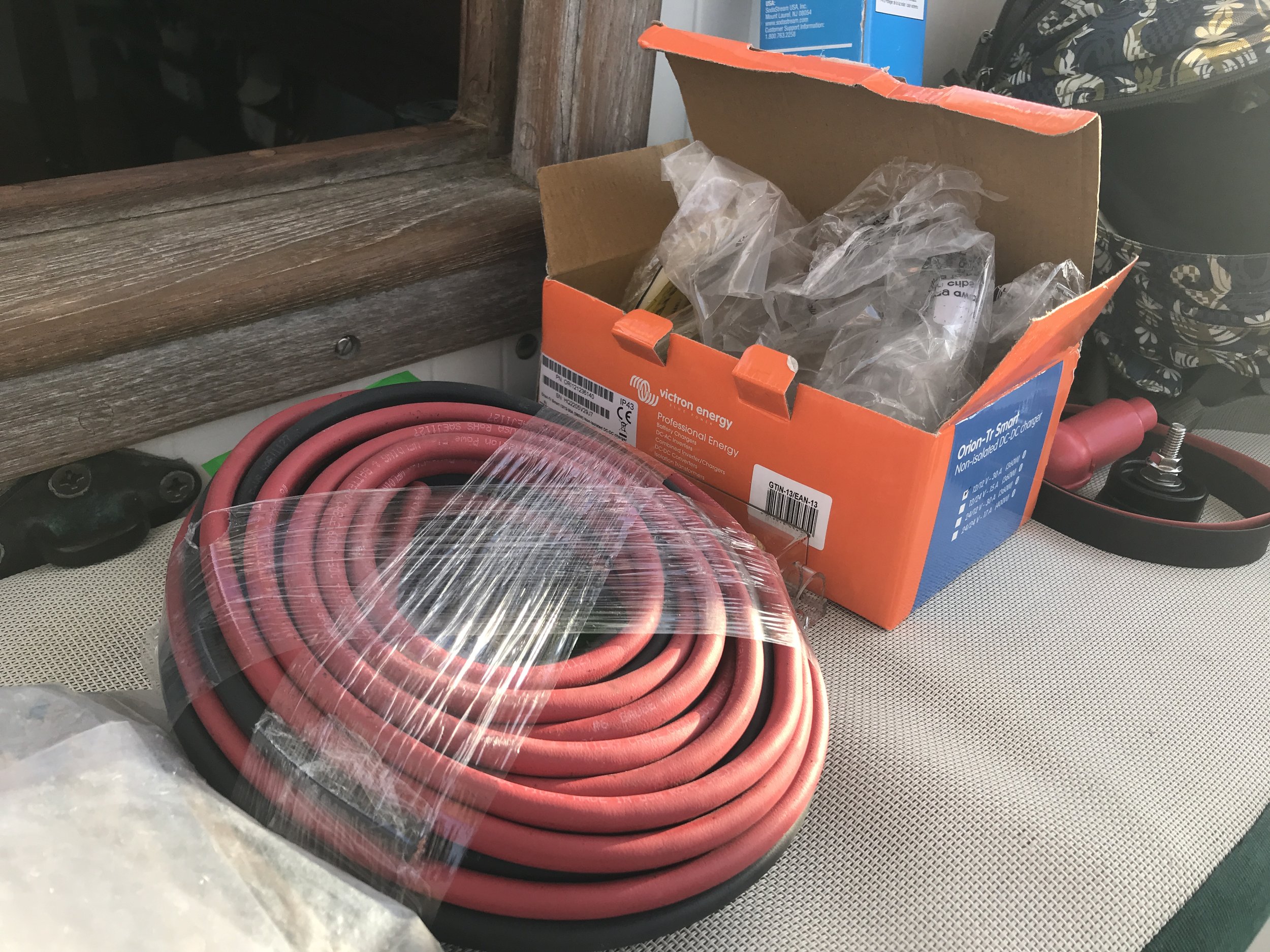Mail Call, Island Style
We picked up an Amazon package a couple of days ago. Why is this worthy of a blog post, you might ask. What’s the big deal? Order from Amazon, two or three days later it shows up on your doorstep. Right?
Not so fast.
Important parts, finally in hand!
First hurdle is a shipping address. We’re nomads on Calypso, traveling between anchorages with not much hassle. Mail, including packages, requires a more stable address. Luckily, friends on a nearby boat have contacts in St Thomas and they offered up the address as a place to get mail sent in.
Next comes the shipping time. We placed the order on December 28, thinking that it might take a week to arrive. Julian was leaving on January 5, so we really wanted to be back in the BVI by January 6. The USVI is just not appealing to us, for reasons I’ll get into as a side note down below. A package arriving in Red Hook on January 5 or 6 would be kind of optimal timing.
Day after day went by with no update on the Amazon order. “Order received” it said. “We’ll alert you when it’s shipped.” January 3rd Jeremy contacted Amazon support. “No, it hasn’t shipped yet.” January 6 Jeremy contacted Amazon support again. “No, it hasn’t shipped. It should ship today.” January 7 the status updated to reflect that it had shipped, with a delivery date on Friday, January 13. (Note: it actually arrived on Tuesday, January 10.)
Friends who have been living on St Thomas on their boat told me this was lightning fast speed for an Amazon order. They’re accustomed to packages taking up to a month to move from “order received” to “shipped”, and then taking a week or even two from that point to actually arrive. To get stuff in 2 weeks is almost unheard of.
Then comes the planes, trains, and automobiles journey to actually pick the package up. Red Hook, where the package was delivered, is on the east end of St Thomas. We’d already made our way over to the eastern end of St John, anchoring in one of only three places where you can anchor. Do we sail back to St Thomas, giving up hard won easting for the third time? Or do we embark on a land adventure of sorts, taking the bus and then the ferry.
Adventure time!
Dinghy ride the couple of miles from where we’re anchored over to Coral Bay, a tiny town with a waterfront road that’s on the bus route to Cruz Bay. Flat water was helpful as our engine is a fuel-sipping 2.5 horsepower one; it took about 30 minutes to get to Coral Bay. There is no dinghy dock but instead you tie the dinghy to a submerged chain that goes from a waterfront tree out to an anchor point about 20 feet offshore. If you go to Coral Bay, be prepared to get wet when getting out of the dinghy!
Dinghy ride view
Hop on the bus (runs every hour and was pretty much right on time) and stuff the $1 each into the cash box. The ride to Cruz Bay, where the ferry terminal is, is a 10 mile, 45 minute trek up to the ridgeline, across the island, and back down. Hairpin turns on steep inclines on a road that’s barely wide enough for 2 cars (jeeps are definitely the preferred vehicle; it’s easy to see why!) sometimes revealed tantalizing views of the water, sometimes with St Thomas in view and sometimes the island treasures of the BVI.
Sign to the Cinnamon Bay trail, seen from the bus
Get to the ferry terminal and buy tickets ($8.15 each way for each of us; it’s $6 if you live on island). We chose to sit on the roof seats, allowing us visibility onto Cruz Bay and Red Hook that we’d not have had from water level.
We’re on the roof of the ferry!
Then it was walking time. One hurdle we hadn’t quite anticipated was that our cell phones had exactly ZERO service; looking up an address on Google Maps doesn’t exactly work when you can’t access the site. An open hotspot saved the day. Picked up the package, unloaded the various parts into the backpacks we carried, and then set off for the second part of our errands.
We’d brought our Soda Stream CO2 canister to get filled, which can be done at Caribbean Inflatables. A 25 minute walk away. If you stick to the main road. Which has no sidewalks. We walked to where the sidewalk ended and joined a woman waiting for a Safari (an open air public transport bus that costs $1). Scores of them rushed by, filled to the brim with cruise ship passengers. Apparently it’s way more lucrative to take a pile of cruise ship passengers on an island tour at who knows what cost per person as opposed to picking up random people at $1 a ride - we gave up waiting after 15 minutes. Jeremy figured out a back road route, and off we set. Let the walking begin!
The 25 minutes on the main road was more like an hour on the back roads. Thankfully we managed to hitch a ride that knocked 25 minutes off the trek. (Side intel which we received later - the signal in St Thomas that you want a ride is to point an index finger down towards the edge of the road. Who knew!) The air conditioned office at Caribbean Inflatables was very welcome!
Note to self: CO2 canisters need some time to refill. As in, they need to spend an hour or more in a freezer before they can be filled. This is not a problem if you’re running errands in a car and can drop off and pick up. It’s more of a problem when you’re walking and are planning on leaving the next day. After all that walking, we decided to take our canister with us and plan on a refill in St Martin. Which we’ll do with plenty of time to spare! We might even get smart enough to call first . . .
Repeat the walk (this time sticking to the main road), ferry, bus, dinghy to get back to Calypso. A full day, lots of modes of transport, lots of steps. But the main purpose of the whole trip? Getting the package? Accomplished. Ahhhh.
Looking towards St John
Back on the bus
Our take on the USVI: we see no reason to return, frankly. Maybe to visit the western end of St Croix? St Thomas might be an okay place to welcome guests. Provisioning and laundry, at the eastern end of the harbor in Charlotte Amalie, is fairly convenient at just a couple of blocks walk. Groceries are shockingly more expensive than the BVI. Charlotte Amalie harbor is crowded, rolly, and the water quality not inviting; backdrop noise of sirens and car horns is a constant. Honeymoon Beach, on Water Island, is slightly better as is Brewer’s Bay. Christmas Cove on Great Saint James Island was probably our favorite spot. St John looks like it would be awesome. The big challenge there is that there are almost no anchorages (“almost no” = 3) where actual anchoring is permitted. It’s mostly national park, with moorings that cost $26 a night and you’re limited to 14 nights in any given month or 30 nights total a year. The moorings are on an honor system so our guess is most people don’t pay. Clearing into the BVI costs less than 2 nights on a mooring in St John and gives you access to unlimited anchorages and untold wonders, including amazing sailing in Sir Francis Drake Channel. No guns and no jet skis add to the appeal. I’ll choose the BVI any time.






